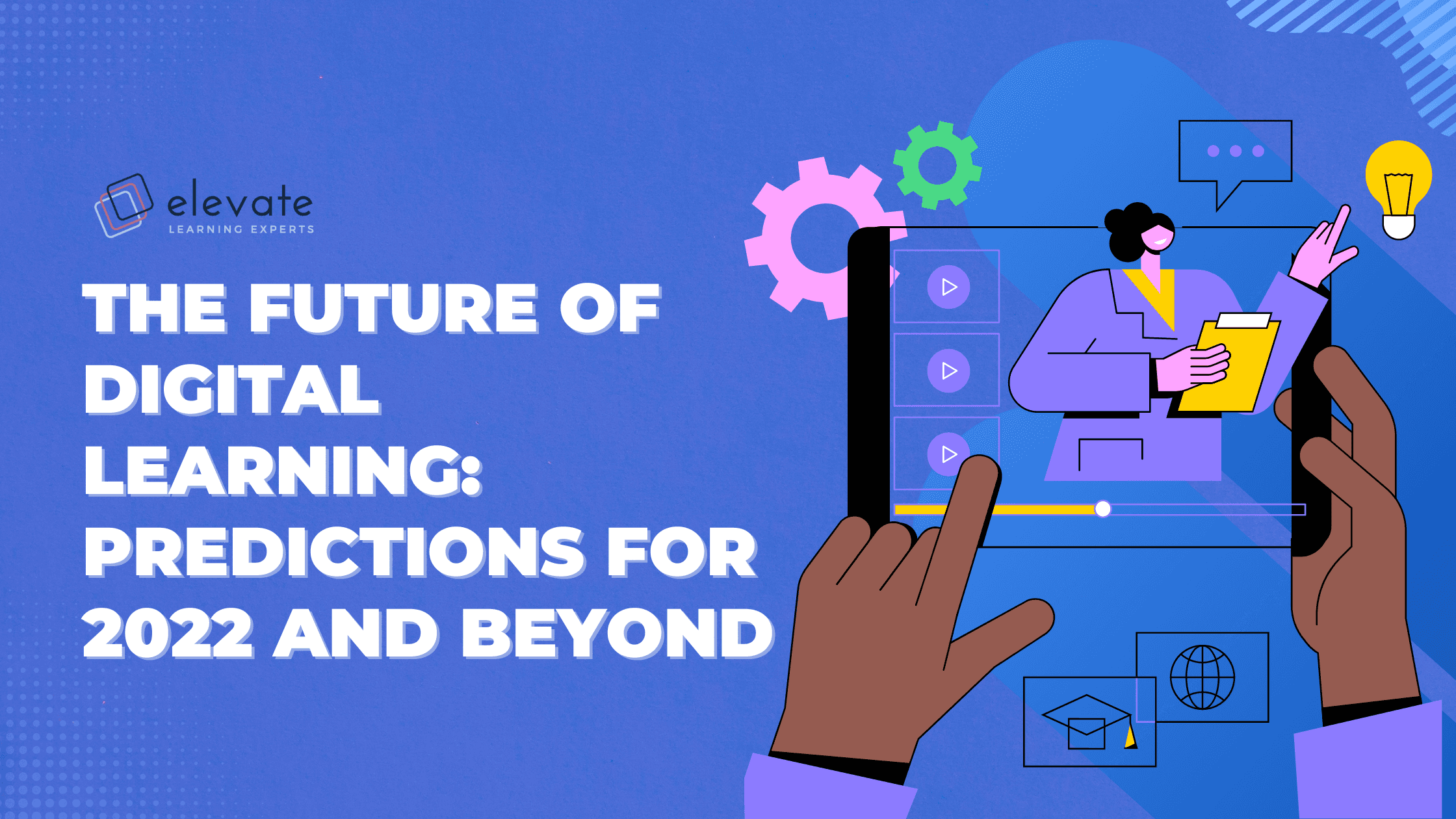If you’ve been tasked with choosing and implementing an online learning platform for your team or organisation, there are some critical questions you’ll need to ask before being sold by the most convincing demo or salesperson. Moving your training online and choosing a learning platform to facilitate this transition is an exciting endeavour, especially if this is the first time your organisation is investing in learning technology, but the edtech industry can also be very overwhelming to navigate.
Online learning platforms have adapted over the years as we have come to better understand online user behaviour, and as a consequence, the industry has exploded with different types of learning systems, each prioritising its own key features or different aspects of the learning process. Different learning platforms, software systems and tools serve different purposes when it comes to how learners interact with your course and with others, as well as how you track and manage their progress. It’s important to understand these differences so you can tailor your learning experience to your users, and launch it on a platform that best suits their and your needs.
Here is where we recommend you take a step back and first focus on why you need a learning platform and then what you will need it to do, based on your business and learning goals, budget and various other considerations. The following questions will help you get to the ‘why’ of your learning experience, and subsequently, to how best to deliver it and via which technology.

1. What are our strategic objectives?

What business problem are you aiming to solve by investing in a digital platform? This could be to scale your learning beyond classroom training, or to improve the tracking and measuring of your learning initiatives. Or perhaps you’re looking to monetise your training interventions, or to better track and manage individual learning journeys or to build learning communities.
Whatever your strategic objectives are will determine the type of platform you choose and help you narrow down how you prioritise key functionality.
Then, you’ll need to take a closer look at your user groups.
2. Who are our key stakeholders?

Who will be using the platform? What are their digital literacy or platform management capabilities? If you’re early into your digital learning journey, you might not need a platform that has all the bells and whistles, or which will require additional support and resources to implement. If you’re upgrading your systems, you’ll need to consider what’s currently working and what is missing.
Either way, spend some time with your end users, platform admins and support team to truly get a sense of their needs, and to communicate about the incoming change.
Then, you’ll need to make sure you understand how a new platform will fit into your organisation’s digital strategy or existing systems architecture.
3. How will it integrate?

Will your new platform need to integrate with any existing security or single sign on procedures? Will you be able to extract all learning data and report on it in your existing systems? If you’re replacing an existing system, what are you trying to replace or upgrade and why? Who will support the implementation and what organisational processes will need to change, if any?
Having a broader understanding of your existing digital landscape will help you ensure that any new solutions you introduce can actually integrate, both from a technological and behavioural perspective.
From here, you’ll need to determine what success looks like.
4. How will we measure success?

Think about how your organisation measures success, what data you will need from the system to do so, and how your stakeholders will want to measure the return on investment. You’ll need to make sure there are no hidden costs or additional licensing or implementation fees, so ask your proposed vendors or suppliers to be very specific about what their pricing does and doesn’t include.
Ultimately, the success of your investment will largely depend on whether you’ve moved the needle as far as your strategic objectives are concerned. The old saying, ‘what’s measured is managed’ is key here, so knowing what your overarching goals are will help you make better decisions when it comes to investing in new technology.
Once you’ve spent some time understanding your strategic objectives, tech ecosystem, your stakeholders and success metrics, you can then look to potential technology partners. There are several approaches to take when deciding on how to deliver your learning experience, and whether you’re going to use an online learning platform specifically. Each option will result in varying and wide-ranging costs, required expertise and training, ownership and control considerations, as well as implications for budget and timelines. So, the process of first answering key questions will help you prioritise your needs, which means you’ll be able to better brief any vendors or suppliers you engage with.
It’s important to disclaim as well that what we call different types of platforms is constantly evolving. How we define a traditional learning management platform in relation to a learning experience platform will depend on how you personally define digital learning, and the acronyms and features of each will also change over time as service providers evolve their products and services. As such, how the different learning delivery solutions have been delineated here is based more on their function in relation to your overarching objectives than how they specifically work or what they’re called in the market.
Here are the different approaches you can take to learning technologies:
1. Install a traditional open-source learning management system with some custom development.

Most learning management systems work on the premise of you installing cloud-based software that can be customised to some degree to meet your technological requirements. The traditional LMS functions primarily as a course management platform, emphasising tracking and managing learning activities. They generally have limited student interaction and engagement and are more suited to tracking student progress against learning objectives through individual assessments and completion tracking. Over time, the functionality of these types of systems have evolved to become more learner-centered, but their fundamental architecture is premised on an individual’s experience of learning content, followed by some sort of measurement of that experience.
Examples of this type of platform are Moodle or OpenEdX, which are both free to download and install, but require some coding knowledge and much custom development to make it your own and to adapt the learning experience to your needs. Recent changes to the ways LMSs are deployed also sees vendors offering to implement these solutions as service offering,, which essentially means they install it for you and make any developments or provide support as you request it.
2. Implement an off-the-shelf, pay-per-user subscription-based platform.

A more recent addition to the learning platform landscape is the LXP, which prioritises personalised learning experiences and tailors learning experiences to the user. It is a more social platform that provides the functionality for learning to happen in communities.
This is where Software as a Service (SaaS) has really come into play in the learning technology landscape. Instead of paying a once-off installation or implementation fee for an open source instance of a learning platform, you’re paying a licence fee per user. This often works out as a more costly per-user fee per annum over time compared to a once off cost, but the longer term benefits are that you are not responsible for maintaining the software, and upgrades and new features are often included in the annual subscription.
The Fosway Group releases an annual report on the potential and performance of various learning platforms of this nature, so it’s always worth reading through reports like theirs to understand the full extent of what’s currently performing well.
3. Upload content to an online plug-and-play course builder.

A similar offering in principle, but better suited to delivering standalone courses, or a suite of similar courses, is through plug-and-play online course builders. These platforms in essence allow you to ‘rent space’ on their platform to market and sell your course offering.
Platforms like LearnWorlds or Kajabi allow you to build your course within their online template. Depending on their subscription tiers and payment options, this means you can create what feels like an entire website for your learning products, with customised URLs and localised payment gateways, without the resource and budget implications of building your own website on top of deploying a learning platform.
However, with some, you are limited to building content straight into the platform, which means they are not all compatible with external content authoring tools which are popular for creating interactive content. Platforms like Thinkific and Teachable are very popular, especially with individuals trying to sell their expertise as an online course, however, both do not support the integration of other types of online, interactive content (know as SCORM packages). This is a serious limitation because you’re restricted to their course builder templates.
If you’re a subject matter expert looking to monetise your current training offer, or you want build and sell a single or a few courses without having to pay for the infrastructure of a full on platform, then this is a good option to start exploring, but make sure you’ve fully understood the limitations of the platform before committing to an annual licence fee of one.
4. Invest in a custom-designed and developed online learning platform.

There is a reason why there are so many off-the-shelf learning platforms and integrations available in the market, and it’s because custom-designing and developing an online learning platform is an enormously costly and time-consuming undertaking. Typically, if you’re choosing to go this route it’s because the project scope is so unique, or the integration with existing systems is so complex, that only a custom-built system will be sufficient.
Having said that, it’s not an impossible task, but because a custom build requires ongoing maintenance and development to keep up with the shifting demands of your stakeholders, going this route can often result in a product with limited functionality, frustrated users and a blown out budget.
5. Optimise a traditional website experience for learning.

An increasingly popular approach to designing learning experiences and delivering online courses is to create a digital experience that is learning focused (as opposed to designing a learning experience that is digital). This allows organisations to share resources and design an interactive learning experience through an existing website or digital tool.
Depending on how your website has been built, this option has proven popular with organisations who offer resources, content or knowledge freely, but are looking to improve the user experience and level of interactivity or engagement with their content. It is here that we’re seeing learning science and user interface design and user experience principles converge.
6. Embed learning experiences into your existing technology stack.

Finally, and perhaps what learning professionals are grappling with the most at the moment, is that if we want to truly embed learning into your current digital experience, we can’t separate where learning takes place from one’s daily activities. You can be sure that unless your employees are working in the digital learning team, they’re not spending most of their day on your learning platform, and so packaging learning into neatly defined online courses and placing them on a separate learning platform to where users interact with each other and their work tasks removes the learning from reality. It adds another barrier to implementing new skills, competencies or information in real time because the ‘what’ is removed from the ‘how’, making it that much more challenging to either bring learners to the learning, or putting the learning experience in the day to day.
One way to overcome this is to move away from the idea of having a separate learning platform altogether and start understanding how learning happens informally - between individuals, in meetings or via emails, through on-the-job mentoring or coaching or even in unprompted conversations. When we shift towards this mentality that learning is always happening, we can begin to see that technology facilitates learning rather than driving it. So if you’re aiming to meet users where they are, then perhaps a learning platform isn’t what you’re after at all.
Obviously this approach makes quantifying the return on learning investment difficult to measure, and takes this article on a bit of a tangent from what a reader might have originally sought answers to, but it’s an important discussion to be had, and one that perhaps needs to be had across the human resources and organisational technology functions entirely.
As with all technology, one platform is never going to be able to meet all of the needs of all of its users. A platform that prioritises communication and engagement among users will function very differently to one that emphasises personalised, curated learning journeys or assessments. Similarly, a learning experience developed and delivered for public consumption will have unique objectives to one designed for an internal organisation or closed collection of people.
Finding the right platform takes time, so make sure you do as much research as you can - both on your own and your users’ needs, as well as on the different platforms out there. Then cross reference with others in similar organisations and with comparable issues and needs. Remember, not all organisations face the same challenges, so a learning platform that works for you, may not work for someone else, and vice versa. This is why it’s important to understand what your objectives are and who your audience is before investing in any system, platform or technology project.

